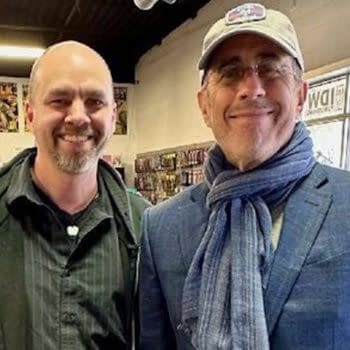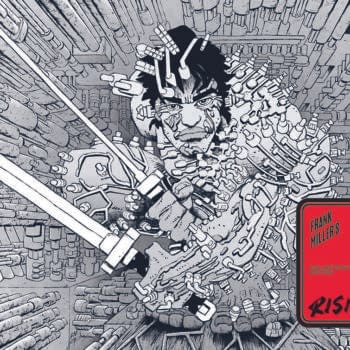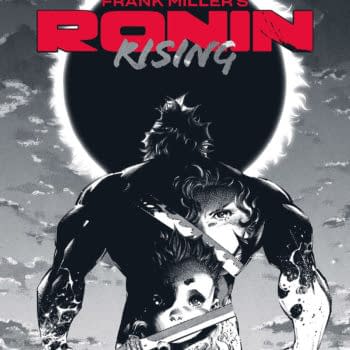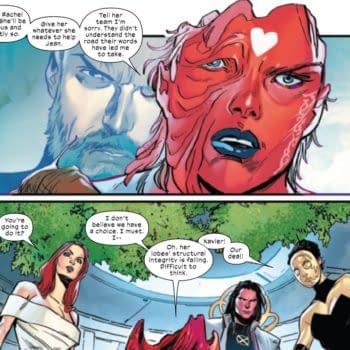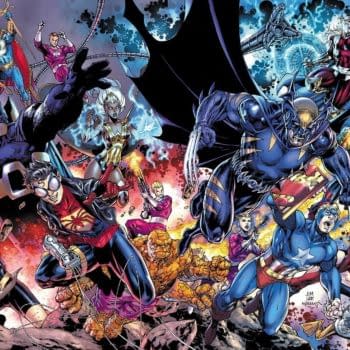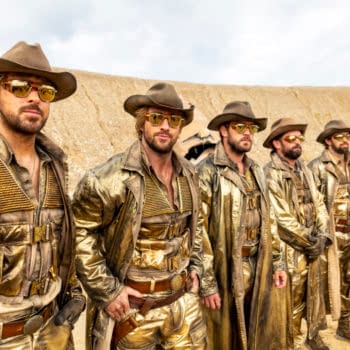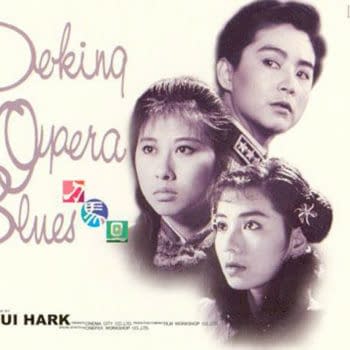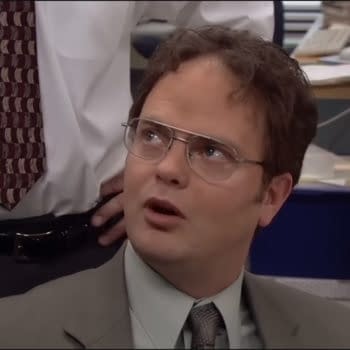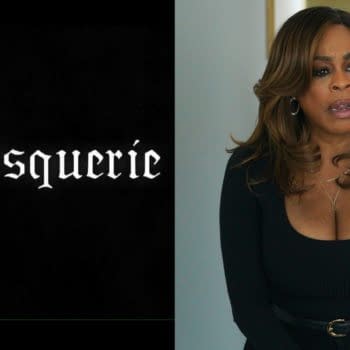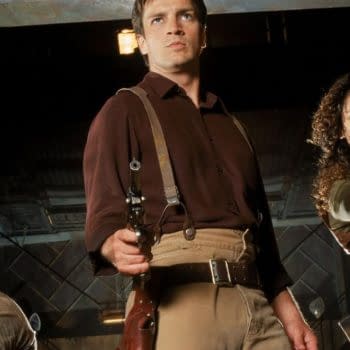Posted in: Movies, TV | Tagged: c2e2, Comics, enetrtainment, gonnageek network
GonnaGeek Network Presents – Everyday Podcasting For Your Everyday Life At C2E2
By Peter G
A lot of people like to make videos, uploading them to YouTube and Daily Motion and so on, thinking they are part of a content revolution. But no. Podcasts. "The Golden Age Of Wireless" wasn't nostalgia but prophecy. You have some radio fiction (I personally dug The Hadron Gospel Hour), but lots of commentary and scene reporting. Podcasts are not only seeing explosive growth, but they have supplanted radio for general audience listening. And it's because it's so easy to do, right? You sit in front of a microphone, you can be reasoned like George Plimpton or rant like Dennis Miller on a coffee buzz, and you're out there, right?
…well, no. True, the actual production is a breeze. But it's the logistics where things hit the grass. Scheduling. Growing your audience. Finding the right mix of personalities for your show.
To that end, the GonnaGeek Network, an umbrella for various podcasts, held a panel on Friday night to talk about, so you want to be a podcaster….what do you do now? GonnaGeek has numerous shows covering all sorts of geek fronts from gaming to movies to whatever. And for anyone looking for guidance was looking to attend.
The room was actually surprisingly filled. It was held on the fifth floor, in a much quieter area of the convention floor, but people were lining up well before the hosts went in to start setting things up. The C2E2 apps and MyShow planners are Reed's version of Brother Eye, and they track what people say they are interested in. And it quickly became obvious that this was going to be a hit.
The room filled, and the panel started, helmed entirely by people from various GonnaGeek podcasts. The moderator was Naki, co-host of All Things Good And Nerdy (and, in the interest of disclosure, a guest star on my One True Pairing animated series). Sitting in the hot seats were Stargate Pioneer, Cody Gough, Chris Ferrell, Willie Nelson, and Beef (that's his handle, not a Misfits Of Science reference). The audience was filled with aspiring podcasters. In fact, other than a two year old kid, I think I may have been the only person there WITHOUT a podcast.
One of the most important nuggets of wisdom dispensed was to become part of a network like GonnaGeek or something like that. It wasn't just because of promotion to build your audience, though. One of the most important things is avoiding "podfade" — a tendency for podcasts to post less and less frequently and eventually stop all together. Usually because of one of two primary causes.
The first is just that the show runs its course — it's for a specific show like Gotham or something and eventually the show gets cancelled or there just isn't enough happening when new episodes aren't being produced or ancillary media or whatever. But the other is trying to do a show with others less invested than you. Eventually, work or dissatisfaction or whatever gets in the way and people start missing episodes, putting more burden on who is left to keep things going. And eventually, that gets tiring.
The benefit of a network like GonnaGeek is that you have compatriots, brothers in arms. If you need someone to fill in, you can put out a call for assistance and others in the network will coordinate with you to guest on the show and keep you going. Pretty much everybody on the panel had appeared on each others' shows at some point or another. So the promotion and awareness of a network is important, but not as crucial as being able to fill the gaps that you run into as you go.
Another question was equipment. In the movie biz, there's a saying — nobody knows what good sound sounds like, but EVERYBODY knows what bad sound sounds like. What do you do to make your show sound decent? The only real hard and fast rule was to not use the condenser mic on a laptop, as it can make a sound that is echo-y or tinny. In fact, condenser mics in general, such as the Snowball, are not advised for podcasting. Condenser mics pick up sound from the entire surrounding area. This is great for music when you want acoustics and such, but is overkill if you are just talking in front of a mic. The main takeaway was to just try to sound good, not perfect. Worry about building your audience first, and if it's working and you're still enjoying it, THEN you can upgrade your gear. One upgrade that isn't very expensive is the Audio Technica ATR2100 USB microphone. This is the, "Don't ask questions, just get it," model. Its use is so widespread, it is auto detected by Windows, Mac, Linux, Android, and iOS (you can plug it into your phone and record that way). I can vouch not only for its sound quality, but also for the price. If you don't bother to shop around, you can find it for $90. A little hunting and some patience, and you can turn it up for $40.
Another way to control noise is your recording environment. And they had a suggestion that, at first, seems silly, but the more you think about it, you realize how brilliant it is. If you live on a noisy street or your apartment has thin walls or anything, and you need a quiet place to record, try a clothes closet. Really. The clothing works as sound bafflers. If you have a walk-in closet, you practically have your own recording studio. Naki had her own suggestion — books. The room she records in is practically packed to the gunnels with books, and they absorb sound amazingly well (you ever wondered why libraries have their unique sound characteristics? There's your answer).
One person with a question had started a solo podcast after being part of a team, and suddenly, they were unable to secure the kinds of guests she talked to when she was part of the show. What could she do? She was advised that she was trying to do too much too fast. She was basically starting over, so she needed to build her way back up to those high level guests by expanding her awareness among the people that she wants to interview and expanding her audience. She was advised not to overlook talking to enthusiastic teens. You get Robert Downey Jr. on your show, he and his publicist won't mention the show because they have more important things to do. But a teen with followers on Instagram? He'll make sure to tell everyone about the show.
Social media! Real important, right? Well…not exactly. Try to focus on three, and make it three that you use, be it Tumblr or Pinterest or whatever. Don't make, say, a Facebook just to have a Facebook because it takes you out of your routine to update and monitor it, so you will start to lose interest, and any portion of your audience served by it will lose interest. The best avenue, they felt, was Twitter. Facebook uses analytics to determine who receives your posts (in case, like me, you can see your post reach and you wonder why the numbers are always so low). Google+ initially didn't use analytics, but now they do. Twitter, they said, was the only one that let you get a real snapshot of who is following you and what they are doing, making them the best bet.
The panel went pretty long, right down to the wire. And afterwards, people were crowding everyone to ask more questions. Those who have made it looking out for those coming behind them. It's always a beautiful thing.
Do you like cartoons? Who doesn't? Peter G is still doing strange things in the name of art, and his new animations, like his cult series One True Pairing, can be viewed on YouTube at Sine Timore Animation Studios







